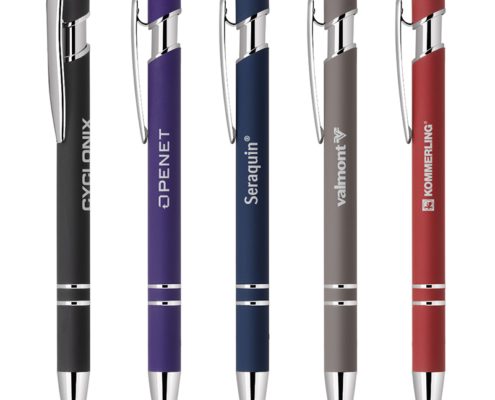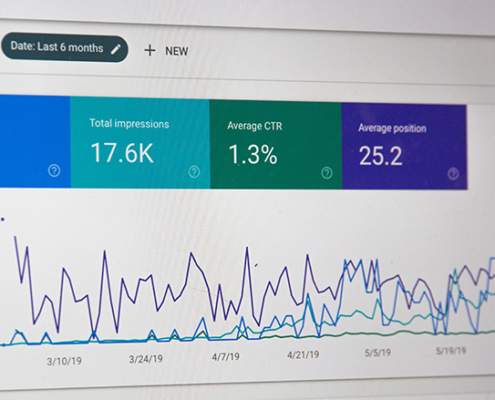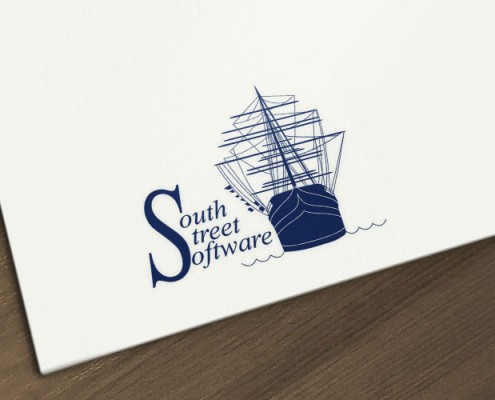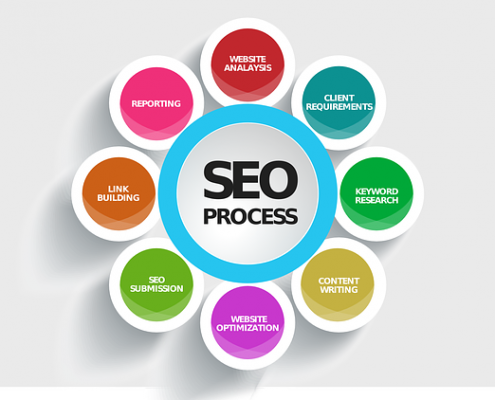Let’s dive into the world of advertising with our latest blog post!
Explore the diverse landscape of advertising strategies, from traditional methods to cutting-edge digital approaches, and discover the keys to enhancing brand visibility and driving sales.
Whether you’re a small business seeking cost-effective solutions or a start-up hungry for success, this blog post unveils insights, tips, and strategies to help you navigate different advertising methods.
Join us on this journey as we unravel the nuances of advertising, empowering you to make informed decisions that propel your business to new heights.
10 Best Advertising Examples for Small Business Growth, Big Impact:
Small businesses are the backbone of any community. They drive innovation, create jobs, and provide unique products and services that often can’t be found anywhere else.
However, with limited budgets and resources, small businesses often struggle to get the attention of potential customers.
This is where advertising comes in. By using creative and effective advertising techniques, small businesses can make a big impact and reach a wider audience.
In this post, we’ll explore some of the top advertising examples for small businesses to grow and succeed.
From using social media platforms to creating eye-catching print ads, we’ll cover everything you need to know to increase your business’s visibility and drive growth.
1. Introduction: The Power of Advertising for Small Businesses
Advertising plays a crucial role in the success and growth of small businesses.
In a competitive marketplace, effective advertising can help small businesses stand out, attract new customers, and build brand awareness.
It serves as a powerful tool to communicate the value proposition of a business and differentiate it from competitors.
By reaching the target audience through various channels, small businesses can create a lasting impact and drive growth.
In this blog post, we will explore top advertising examples that showcase the creativity, innovation, and strategic thinking that can propel small businesses to success.
From social media campaigns to traditional print ads, we will highlight how small businesses can leverage advertising to make a big impact in their respective industries.
Let’s dive into the world of advertising and discover the endless possibilities it offers for small businesses aiming for growth and success.
2. Storytelling through Ads: How to Connect with Your Audience
Storytelling through ads is a powerful way to connect with your audience on a deeper level.
By crafting a compelling narrative, you can evoke emotions, build trust, and create a lasting impression in the minds of your customers.
One great example of storytelling through ads is the iconic Coca-Cola holiday campaigns.
Year after year, Coca-Cola releases heartwarming advertisements that center around themes of joy, togetherness, and happiness.
These ads often feature memorable characters like the Coca-Cola polar bears, creating a sense of nostalgia and warmth that resonates with audiences worldwide.
Another excellent example is the “Share a Coke” campaign, where Coca-Cola replaced its logo with popular names and nicknames on its bottles and cans.
This personalized approach made customers feel special and encouraged them to share their unique Coke experiences on social media, leading to increased brand engagement and loyalty.
When crafting your own storytelling ads, remember to focus on authenticity, relevance, and emotional appeal.
By sharing your brand’s values, mission, or unique selling proposition in a compelling way, you can forge a genuine connection with your audience and differentiate your small business in a crowded market.
3. Social Media Advertising Examples: Leveraging Platforms for Growth
Social media advertising has become a powerful tool for small businesses looking to boost their growth and reach wider audiences.
With billions of active users on platforms like Facebook, Instagram, Twitter, and LinkedIn, these social networks offer a valuable opportunity to target specific demographics and engage with potential customers in a more personalized way.
One of the key advantages of social media advertising is the ability to create highly targeted campaigns based on factors such as age, location, interests, and online behavior.
By leveraging the advanced targeting options available on these platforms, small businesses can ensure that their ads are seen by the right people at the right time, maximizing the chances of conversion.
Additionally, the interactive nature of social media allows businesses to engage directly with their audience through comments, messages, and interactive content.
This two-way communication not only helps to build relationships with customers but also provides valuable insights into their preferences and behaviors, which can inform future marketing strategies.
From sponsored posts and carousel ads to influencer partnerships and live video content, there are numerous ways for small businesses to leverage social media advertising to drive growth and increase brand awareness.
By crafting compelling ad creatives, monitoring performance metrics, and refining their targeting strategies over time, small businesses can make a big impact on social media and beyond.
4. Influencer Collaborations: Harnessing the Power of Influencer Marketing
In today’s digital age, influencer marketing has become a powerful tool for small businesses looking to expand their reach and connect with new audiences.
Collaborating with influencers allows businesses to leverage the credibility and influence of individuals who have a loyal following on social media platforms.
When selecting influencers to collaborate with, it’s important to choose individuals whose values align with your brand’s mission and target audience.
Look for influencers who have a genuine connection with their followers and a track record of promoting products or services in an authentic and engaging way.
By partnering with influencers, small businesses can tap into new markets, increase brand awareness, and drive sales.
Whether it’s through sponsored posts, product reviews, or influencer takeovers, the possibilities for collaboration are endless.
Influencer collaborations can provide small businesses with a cost-effective advertising strategy that yields impressive results.
By harnessing the power of influencer marketing, small businesses can amplify their message and make a big impact in the digital landscape.
5. Creative Print Advertising: Standing Out in a Digital Age
In today’s digital age, where online marketing dominates the advertising landscape, creative print advertising can be a powerful tool for small businesses looking to stand out and make a big impact.
While digital marketing offers a wide reach, print advertising allows for a tangible and memorable connection with potential customers.
From eye-catching magazine ads to innovative direct mail campaigns, print advertising offers a unique opportunity to showcase creativity and capture the attention of your target audience.
By leveraging bold visuals, compelling copy, and unique design elements, small businesses can create print ads that not only grab attention but also leave a lasting impression.
Print advertising can also be a great way to target specific geographic areas or niche markets.
Local newspapers, magazines, and even outdoor billboards can help small businesses reach their desired audience in a targeted and cost-effective manner.
By incorporating creative print advertising into their marketing strategy, small businesses can differentiate themselves from competitors, build brand awareness, and drive customer engagement.
In a digital age where consumers are bombarded with online ads, a well-executed print ad can cut through the noise and leave a lasting impact on potential customers.
6. Video Marketing: Engaging Audiences through Visual Content
In today’s digital age, video marketing has become a powerful tool for engaging audiences and driving growth for small businesses.
Videos have the ability to convey messages in a dynamic and captivating way, making them highly effective in grabbing viewers’ attention and leaving a lasting impact.
One great example of successful video marketing is the Dollar Shave Club’s viral video campaign.
The company’s humorous and relatable video not only showcased their products but also effectively conveyed their brand personality and value proposition.
This video went viral, resulting in millions of views and a significant boost in brand awareness and sales for the company.
Another example is Airbnb’s “Wall and Chain” video campaign, which highlighted the unique and personal experiences that travelers can have when using their platform.
This emotionally engaging video resonated with audiences and effectively communicated Airbnb’s brand message, leading to increased brand loyalty and customer engagement.
By creating compelling and engaging video content that resonates with your target audience, small businesses can effectively showcase their products or services, drive brand awareness, and ultimately, fuel growth.
Incorporating video marketing into your advertising strategy can help your business stand out in a crowded marketplace and make a big impact on your audience.
7. Guerrilla Marketing Tactics: Unconventional Strategies for Impact
Guerrilla marketing tactics are all about thinking outside the box and creating unconventional strategies to make a big impact with limited resources.
These tactics are often low-cost but high-impact, making them perfect for small businesses looking to stand out in a crowded marketplace.
One example of guerrilla marketing is using street art to promote your business.
By creating eye-catching and colorful murals or graffiti in strategic locations, you can attract attention and generate buzz around your brand.
This not only grabs the interest of passersby but also creates shareable content that can go viral on social media.
Another guerrilla marketing tactic is staging a flash mob or a public stunt to create a memorable and engaging experience for potential customers.
By surprising and delighting people with a unique and entertaining event, you can leave a lasting impression and generate word-of-mouth buzz about your business.
Overall, guerrilla marketing tactics are all about creativity, boldness, and thinking differently to make a big impact with your advertising efforts.
By embracing these unconventional strategies, small businesses can level the playing field and compete with larger competitors in a memorable and impactful way.
8. Email Marketing Campaigns: Nurturing Customer Relationships
Email marketing campaigns are a powerful tool for nurturing customer relationships and fostering loyalty.
When done right, these campaigns can have a significant impact on customer engagement and retention.
By sending targeted and personalized emails to your customer base, you can keep them informed about your latest products, promotions, and updates.
One effective strategy is to segment your email list based on customer preferences and behaviors.
This allows you to tailor your messages to specific groups, making them more relevant and engaging.
For example, you can send exclusive offers to loyal customers, educational content to new subscribers, and reminders to inactive users.
Furthermore, automation tools can help you streamline your email marketing efforts and deliver timely messages to your customers.
By setting up automated workflows, you can send welcome emails, birthday greetings, order confirmations, and follow-up messages without manual intervention.
Overall, email marketing campaigns play a crucial role in nurturing customer relationships and driving business growth.
By consistently delivering valuable content and personalized communication, you can keep your brand top of mind and encourage repeat purchases from satisfied customers.
9. Case Studies: Successful Small Business Advertising Campaigns
Case studies of successful small business advertising campaigns can provide valuable insights and inspiration for entrepreneurs looking to boost their own marketing efforts.
By examining real-world examples of businesses that have achieved growth through strategic advertising, small business owners can learn from their successes and apply similar tactics to their own ventures.
One notable case study is that of a local bakery that saw a significant increase in sales after launching a targeted social media advertising campaign.
By identifying their key customer demographics and crafting engaging content that resonated with their audience, the bakery was able to drive traffic to their store and increase online orders.
This example highlights the power of understanding your target market and creating tailored advertising messages to reach them effectively.
Another inspiring case study is that of a small clothing boutique that utilized influencer partnerships to expand their reach and attract new customers.
By collaborating with popular fashion bloggers and social media personalities, the boutique was able to leverage their existing fan base and tap into new audiences.
This successful advertising strategy not only drove sales but also helped to position the boutique as a trendsetter in the industry.
These case studies demonstrate the importance of creativity, research, and strategic planning when it comes to small business advertising.
By learning from the experiences of others and adapting proven tactics to their own unique circumstances, small business owners can make a big impact with their advertising efforts and drive sustainable growth for their ventures.
10. Conclusion: Key Takeaways for Small Business Growth through Advertising
In conclusion, advertising plays a pivotal role in the growth and success of small businesses.
By implementing effective advertising strategies, small businesses can significantly increase their brand awareness, customer base, and revenue.
Key takeaways for small business growth through advertising include:
1. Understand Your Target Audience: Knowing your target audience is crucial for creating advertising campaigns that resonate with potential customers.
2. Choose the Right Advertising Channels: Selecting the most suitable advertising channels that reach your target audience is essential for maximizing the impact of your ads.
3. Consistent Branding: Maintaining consistent branding across all advertising platforms helps build brand recognition and trust among customers.
4. Monitor and Measure Results: Tracking the performance of your advertising campaigns allows you to identify what works best and make data-driven decisions for future campaigns.
5. Adapt and Evolve: The advertising landscape is constantly evolving, so small businesses must be willing to adapt to new trends and technologies to stay ahead of the competition.
By implementing these key takeaways and continuously refining your advertising strategies, small businesses can achieve substantial growth and make a lasting impact in their respective industries.
In conclusion, we have explored a variety of top advertising examples that showcase how small businesses can make a big impact and drive growth.
By learning from these successful campaigns and strategies, small business owners can gain valuable insights on how to effectively promote their products or services to a wider audience.
Remember, creativity, consistency, and understanding your target market are key components of any successful advertising campaign.
Implement these ideas into your own marketing efforts and watch your business flourish.
Here’s to the success and growth of your small business!
In conclusion, advertising serves as the dynamic engine that propels businesses into the spotlight, connecting them with their target audience and driving sales.
The diverse landscape of advertising, ranging from traditional methods like print and broadcast to the ever-evolving digital realm, offers businesses a plethora of avenues to explore.
For a online business seeking to enhance sales, the use of digital advertising, particularly through social media and search engines, proves invaluable in reaching and resonating with potential customers.
As we navigate advertising options, it becomes clear that there is no one-size-fits-all solution.
The strength of advertising lies in its adaptability to diverse needs and objectives.
For small businesses, a strategic blend of cost-effective options such as online marketing, community engagement, and word-of-mouth promotion can yield impressive results without breaking the bank.
Understanding the financial considerations is crucial, with businesses advised to allocate a reasonable percentage of their revenue to advertising.
However, the average cost varies widely, influenced by factors like industry competitiveness and chosen advertising channels.
Businesses must weigh their options carefully, taking into account their unique circumstances and goals.
While budgetary constraints may pose challenges, the availability of free advertising channels is a beacon of hope for small businesses.
Social media platforms, content marketing, and community involvement offer cost-effective avenues to enhance visibility and build relationships.
Yet, it’s essential to recognize that even free advertising demands an investment of time and effort.
By staying attuned to industry trends, understanding their target audience, and crafting compelling messages, businesses can navigate the advertising landscape successfully.
Whether leveraging the power of digital platforms or embracing grassroots strategies, businesses that strategically invest in advertising will find themselves not only surviving but thriving in the competitive marketplace.
As the saying goes, “Out of sight is out of mind,” and advertising ensures that businesses remain firmly in the forefront of their customers’ minds, ultimately translating into sustained growth and success.
What to do next…
- Leave a comment
- Share this awesome post and make us extremely happy
- Get in touch with us about our services
Thank you for reading our post!






















































 HFB Advertising
HFB Advertising











































































